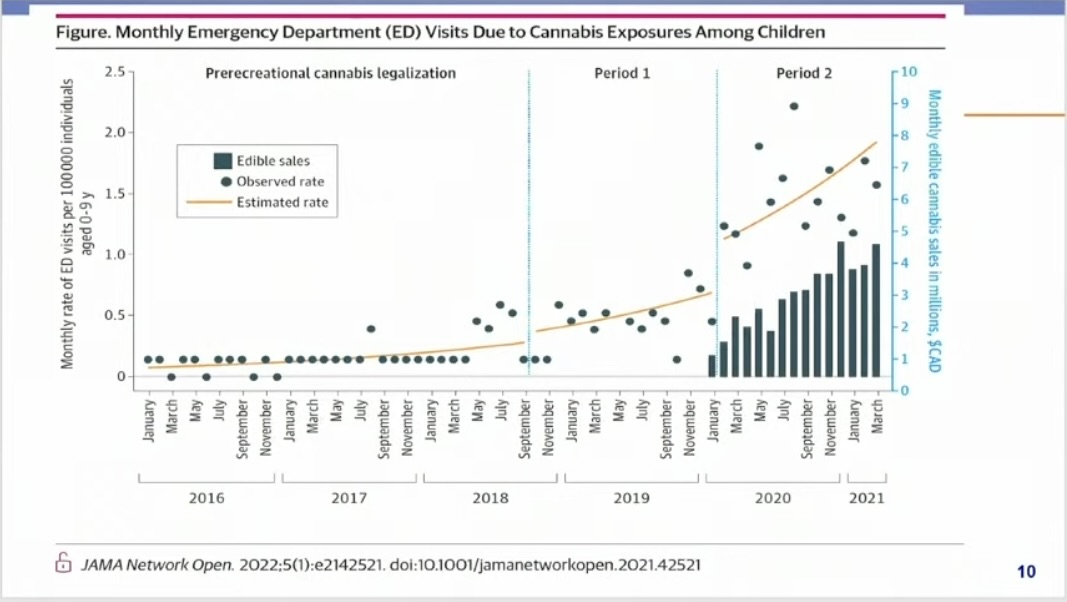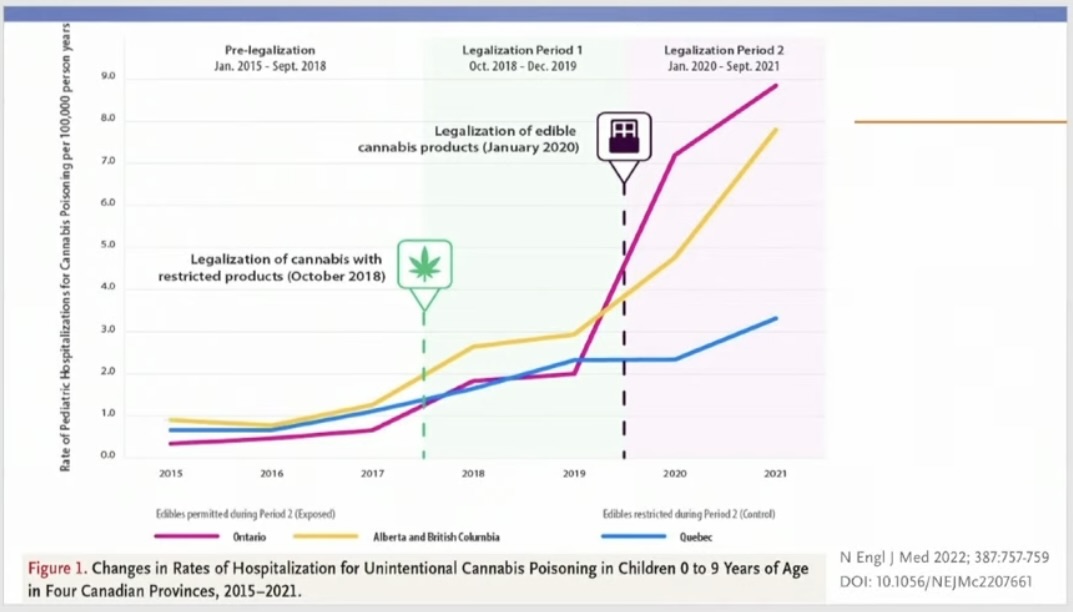Ottawa physician and public health specialist Dr. Daniel Myran is warning that cannabis poisonings in children may become more common and severe — primarily because of the growing popularity of marijuana edibles.
This comes as federal government officials are reviewing the Cannabis Act to focus on the health and cannabis consumption habits of young people, the impact of cannabis on Indigenous persons and communities and the impact of the cultivation of cannabis plants “in a housing context,” said a federal website outlining the review.
Myran, who recently raised alarms about cannabis poisoning during a presentation to Ottawa’s Board of Health, said the cannabis industry several regulations that are designed to help prevent children from consuming edible cannabis products lifted.

“The industry has been proposing … (easing) limits on THC, marketing, packaging, all because they say that these create problems of competing with the illicit market, they cut into profits and they would like to see these (regulations) go,” said Myran, a public health and preventive medicine physician as well as a family physician and health services researcher.
He is also a Canadian Institutes for Health Research Fellow at the Ottawa Hospital Research Institute and an innovation fellow with the University of Ottawa’s Department of Family Medicine.
Myran is concerned that removing these regulations could increase the already rising number of cannabis poisonings in Canada.
“The caution that I would raise is that we had a large increase in poisonings and their severity with these policies in place — and that if they’re gone, you actually see more poisonings and more severity,” he said.
In his Sept. 19 presentation to the Board of Health — which is comprised of six city councillors and five members of the public — Myran shared the results of his recent study on cannabis poisonings among Canadian children.

“If you look in this pre-legalization period, you see on average two and a half emergency room visits a month in Ontario caused by cannabis. In period one, which is when we have limited cannabis markets come to market, the trend continues but there’s no real jump,” he said.
But that changes when edibles — some shaped like gummy bears and other colourful candies — start being sold.
Myran said he believes the sudden increase in cannabis poisonings reflects edible cannabis products entering the commercial market.
“In period two, which is when we have our new edibles roll out … you see that these visits in young children increase to 22.5, so a nine-fold increase,” he said.
Do you need to have products as appealing as they are in sight and taste to young kids? Can adult consumers get the choice that they’re looking for through other forms of cannabis that are not red, covered in sugar and in the shape of a gum drop?
— Dr. Daniel Myran, public health and preventive medicine specialist, Ottawa Hospital Research Institute
Myran said that by the second period of the study, the number of children needing to be hospitalized for cannabis poisoning almost doubled.
“So by the end of the study, 40 per cent of these children actually need to be admitted to hospital for further interventions and monitoring, and that was only 23 per cent at the start of the study,” he said.
Ottawa Board of Health member Theresa Kavanagh agreed that candied cannabis products are a problem.
“The candy business is problematic. It kind of reminds me of children’s aspirin way back when they had sweetened children’s aspirin and you had to keep that away from kids,” the Bay Ward councillor said.
Representatives of the cannabis industry object to the implications of this data, according to Myran.
“There’s been some objections from representatives of the cannabis industry. The first main one is that these aren’t actually real poisonings,” he said.
But Myran says some children in the study became seriously ill due to the effects of cannabis.
“One of our study authors is an ICU pediatric physician who deals with cannabis poisoning … These kids are very very ill. You have to consider that they’re having an ingestion of a product that’s meant to cause an intoxication or high in an adult, and the kids on average are three and a half and they’re quite sick. Some of them without medical intervention do have a real risk of dying,” he said.

Myran said that the other objection to the study’s findings from industry stakeholders is that parents and caregivers, following legalization, have become more willing to admit that cannabis was being used when they seem emergency assistance.
“That’s a really nice explanation for why you might see a small increase immediately post legalization, but it doesn’t explain why these visits keep increasing massively when edibles come to market,” said Myran.
He added that, while education always has a role to play, further education of caregivers won’t result in meaningful change.
“We could put more education at this issue, but I don’t think that we should expect to see major results,” he said.
Tammy DeGiovanni, vice-chair of the Ottawa Board of Health, agreed.
“We always do hear, ‘It’s all about education,’ and we all know, it’s not all about education,” she said.
Myran said there’s a chance for city officials and others to help tackle this problem is by getting involved with the Cannabis Act review.
“The big opportunity that is happening is that we are reviewing at the federal level how cannabis is regulated. And I think there’s an opportunity, if local boards of health are interested in giving submissions to Health Canada with their perspectives,” he said.
“We’re at a very dangerous moment for cannabis regulation,” Myran warned. “Do you need to have products as appealing as they are in sight and taste to young kids? Can adult consumers get the choice that they’re looking for through other forms of cannabis that are not red, covered in sugar and in the shape of a gum drop?”




